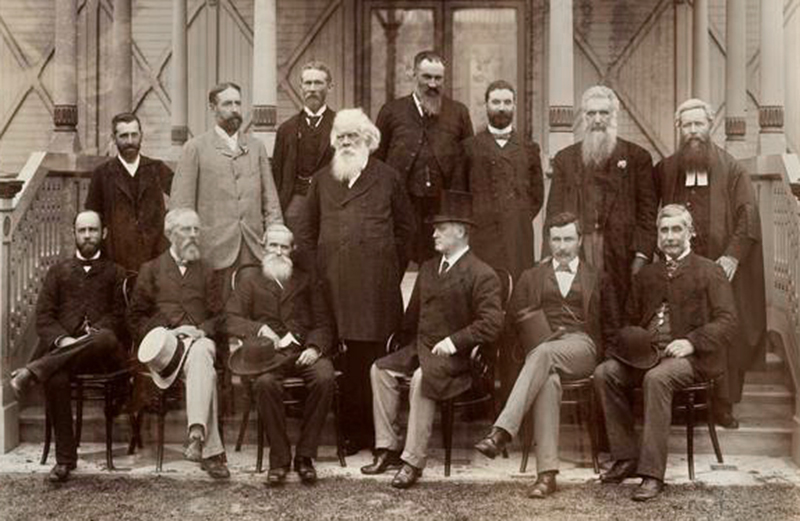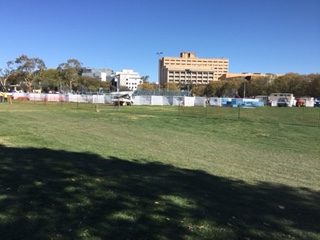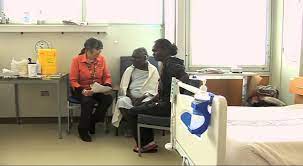This is the second of three posts on aspects of Australia’s Covid-19 response that it will be useful to analyse. The pandemic has exposed some hitherto under-emphasised realities of Australia’s federal system. Some of them are positive but a greater number can be described as challenges of the Federation.

PART 2: The Australian Federation
The pandemic has thrown new light on both the benefits and the challenges of Australia’s federal system. The positive elements include a new understanding of the need for inter-governmental cooperation within the nation and ways in which it can be effected, and some major (and rapid) changes in the way services are provided to the public. One example of the latter is how the pandemic led to a major extension of the provision of subsidised health services through telehealth.
However there is a longer list of issues relating to Australia’s governance that have emerged – in particular as it relates to service delivery – that are negative or even dysfunctional. Given their importance and general acceptability, some of the required changes to Australia’s system of governance that have come to light can and should be implemented as soon as possible.

Probably none is more serious (or more familiar) than the need to rationalise, re-order and clarify governmental responsibilities for health-, aged- and disability-care.
Australia’s care systems
Major reforms to the health, aged care and disability care systems have been called for by many people for very many years. But never before has there been such a naked, loud and transparent series of events that attest to the need for Big Reform to these care systems as have occurred during the Covid-19 pandemic.
Coupled with the Report of the Royal Commission into Aged Care Quality and Safety – an important piece of work, but just the latest in a long series of inquiries into aged care – the pandemic has surely demonstrated to everyone’s satisfaction that Australia’s aged care system needs massive, urgent change. It is under-funded, under-staffed and inadequately regulated.
To date the residential aged care sector in Victoria has been the location of the largest group of Covid deaths in Australia. Down the track it will be useful and important to unpick the evidence about rates of mortality, management and ownership structures, staffing, and emergency procedures in that sector.
The results of such analyses will be valuable in the consideration of changes that, at last, seem inevitable.

There are fundamental questions about whether the Commonwealth has the capacity and skills to manage aged care, including the regulation of staffing. The pandemic has also laid bare basic questions about the legal rights and responsibilities of residential aged care facilities, for instance in relation to the mandating of staff vaccination.
There will be studies and comparisons made of the performance of various Health Departments – Federal, State and Territory. In particular, their public health operations and staff will come under close scrutiny. Also under the microscope will be Australia’s body of public health and related health professionals, and the research, teaching and practice settings in which they work.
The universities will be able to claim the Australian response to the pandemic as evidence of the need for extra investment in public health and other health-related research and teaching, as well as in clinical practice.
It is certain that the capacity of our health system and the agencies within it to do effective public relations and communications (‘messaging’), and for the management of data, will come under particular scrutiny. Eighteen months ago we were promised an open approach to the decisions made in the pandemic and the modelling behind them, and the numbers of patients involved. In fact the data systems relating to the pandemic, and relating to vaccination in particular, have been appalling.
Efficiency of the public service
The pandemic has drawn attention to a number of matters related to the confidence and flexibility of institutions in the health sector. Given the daily widespread publicity associated with the pandemic, the public has had the opportunity to peek inside Health Departments and health research agencies. We have become familiar with some of the country’s epidemiologists and we now have some idea of what they do.
Overall Australia seems to be well-placed where public health management and research are concerned. As someone who has been glued to current affairs television, I can attest to the fact that the nation’s public health professionals have proved themselves to be a hard-working and charming lot, whether from research institutes, universities or state health agencies.
When it is time, there will inevitably be comparisons drawn between the various agencies that have been ‘out front’ during the pandemic. Underlying the criticism of the Federal response on vaccination is the question of the efficiency or competence of the Federal Department of Health. There will be comparisons of the efficiency with which various jurisdictions have undertaken the tracking and tracing work which have been so central to suppression of the virus.
At one stage in 2020 the differences in the apparent success of suppression activities as between the two largest States were attributed to the different structure of public health activity in the respective jurisdictions. This is the kind of assertion it will be useful to analyse.
One of the most surprising things has been a general inability of governments and the public service to inject a real sense of urgency into responses to the pandemic. This is particularly the case for the vaccination regime. The Commonwealth knowingly grabbed responsibility for vaccination at the beginning, presumably because it seemed to be an obvious way in which to win political points and public support. However it turns out that, on vaccines and vaccination, the Commonwealth is now being slowly hoist by its own petard.
The lack of urgency related to vaccination has been compounded by mixed messaging and uncertainty as to what arrangements relate to which parts of the population and to which vaccine at any given time. There has been no decent information campaign, no use of appropriate celebrities.
Clear messaging is important but is a second order issue if the target for the messaging is uncertain. A good campaign will be one that achieves some specific action or attitude. But it has not been clear whether ‘a good campaign’ would be one that moves people to be supportive of vaccination, or inspires them to get an appointment with ‘their GP’ (if they have one), or drive to a pop-up clinic, or attend a health clinic, ask at the local pharmacy, run the gauntlet of an on-line system or phone the dreaded telephone number to learn what number they are in the queue.
At the risk of seeming parochial, it may be that the ACT has been an exception to the charge of failing to take urgent action. Just down the road from my home, a cricket ground was transformed eighteen months ago into a temporary field hospital for Covid-19. It cost $23 million and was built in just 37 days. In May 2020 it was thought that it would never be used. It is now a vaccination hub for the administration of the Pfizer vaccine.

Care of vulnerable groups
One of the worst characteristics of the vaccination regime has been its failure to identify and treat population groups in order of their vulnerability to illness and hospitalisation as a result of Covid-19.
When comes the time for evaluation of what went wrong there will be important lessons to learn about who is vulnerable, in what settings, and how their needs can be swiftly met. It will be clear that there then needs to be clear communication of these priorities, built in to the schedule or road map made public.
So far, when it comes to protection from risks, elderly people in residential care and at home, and people with a disability, have been badly let down.

It was during the 2020 lockdown in Victoria that the majority of Australia’s pandemic deaths occurred. The greatest number of those deaths was among elderly patients in aged care accommodation. And in this group a disproportionate number were in private aged care institutions rather than the State’s public facilities. This raises the question as to whether there are some structural, attitudinal or operational characteristics of facilities in the various sectors which may help to explain the different rates of illness and mortality.
In contrast to care of the elderly and those with a disability, one of the standout successes of Australia’s suppression of the Covid-19 virus to date has been with Aboriginal and Torres Strait Islander people. Aboriginal and Torres Strait Islander communities have barely been affected. It will be important and useful to understand how and why this has been the case – and critical to prioritise Aboriginal and Torres Strait Islander people in the vaccination queue, especially communities in more remote areas where there are limited numbers of health clinicians.

[See Part 3 of this post: Some better news]
